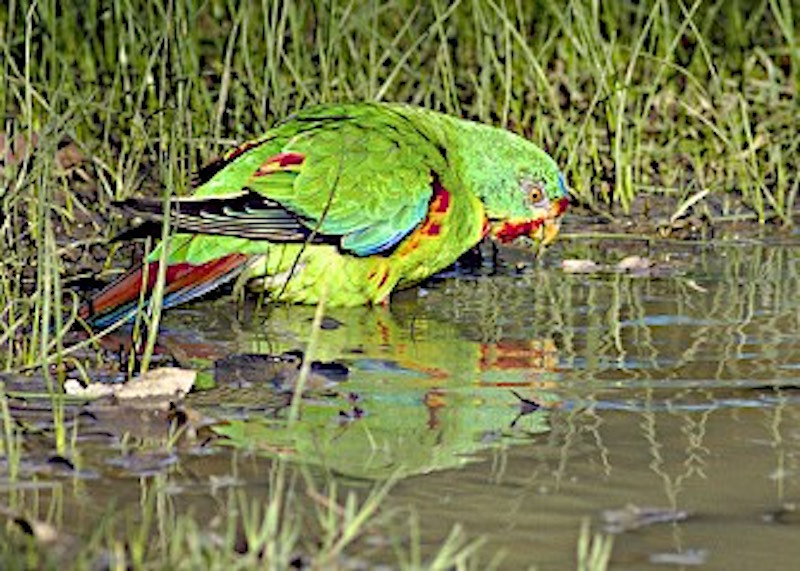
It’s National Threatened Species Week!

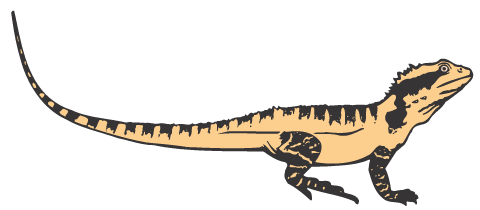
by mccgadmin

by mccgadmin
Please be advised that the McKay Brook working bee for Saturday 2 September HAS BEEN CANCELLED.
The next Section 11 working bee will therefore be Sunday 17 September.
So please keep an eye on the Working Bee Calendar. We will advise plans for 17 September closer to the time.
by mccgadmin
Greg made a suggestion last year that we have a picnic table near the creek in the area under the mature trees. Brooke Lett of Galvin Road has offered to build our picnic table.

We have four more working bees this year and a couple next year before the threat of heavy rain events and flooding. The area near the culvert needs to be protected with plants and rocks.
While we can never be sure what damage the flooding will have and on each occasion we lose plants and creek bank. However some bank and plants remain and so we repair and over time we will stabilize the bank with native vegetation instead of been overgrown with exotic grasses and vines. This is what we have been doing on our creek bank for the past number of years, So this is why we have been concentrating on this area.
In addition, we need to keep the elephant grass out of the main creek channel and keep the access to the creek open. This allows regrowth and regeneration of native plants which in time will replace the exotic weeds. I am hoping we can also keep open secondary channels by slashing along side these. We have started to do this with one from the far culvert running alongside the area of the mature trees to the main channel.
During the dry spell the planting has been managed by regular watering and suppression of weed growth around these plants. This is the hard part of any bush regeneration project. Often the easier part is the clearing and planting. Not saying that it doesn’t involve effort but follow up is the harder part as it involves commitment to realise the hard gains we are making.
What is encouraging is seeing the gains! Plants we have planted, some are starting to flower and produce seeds. A few of the lomandras, the yellow Senna on the road side have lovely seed pods. A number of existing plants like the deep yellow wood, green and yellow kamala, mutton wood, red olive plum and a number of vines like the slender lilly, barb wire vine are producing seeds and have provide new plants that regrow in this area. Like also the kangaroo vine which is dropping black fruits on the road margin just opposite Galvin Road.
The mature gray gums, brush box and iron barks rain down seeds or bring in birds and other wildlife that shed seeds for re-growth. The under story plants are starting to thrive like the native grasses and ferns such as the rasp and maiden hair ferns. The re-growth of these plants is made easier when they are not overgrown by exotic grasses and vines that have been in the area for some time.
The two areas special in this site is the area under the mature eucalyptus and the area under the canopy where the cats claw is growing (but being managed). Both areas have great abundance and increase biodiversity of native plants
Finally, be on the look out in the coming few months for yellow flowers up trees, Cats Caw Creeper.
Lets break the cycle and stop the spread of seeds!
Our Masked Lapwings are still around, along with the Welcome Swallows. The warm weather has brought out one of our reptilian friends, a small fresh water snake inthe creek looking for feed. Any other sights you may see would be great to share.
Be calm in other people’s storms …
by mccgadmin
And you won’t even need gardening gloves!
Our PHOTOGRAPHY COMPETITION team REALLY needs some helpers ….
None of us wants to see 2017 as the final year of the iconic MCCG Photography Competition. It has been held held every year in October since 1998 and generally offers over $1500 in cash prizes.
It’s hugely popular and each year it attracts entries of amazing quality from the young and the not-so-young, It has an Open category, a Young Persons category and a special competition for schools in the catchment. The annual display at Kenmore Village is a local attraction which people and schools look forward to each year.
If you click here you’ll see some of our winning entries for 2016 and you’ll understand why!
… if you’d like to be part of this event and help keep it alive, the Photography Team would love to hear from you!
We need you, just for a few hours throughout the year!
Please send an email to [email protected] to learn about how you can help.
For general info about the Photography Competition, click here.
by mccgadmin
The latest Waterway Health Assessment Training (WHAT) workshop, run by Brisbane City Council, is free for catchment group members. It will teach you techniques that can be used to assess the abundance and diversity of stream fish species.

by mccgadmin
It’s the time of year to start thinking about the Moggill Creek Catchment Photo Competition.
I thought the standard last year was terrific. There were so many beautiful entries and they certainly viewed by a large number of shoppers in Kenmore Village.
As many were photos of birds in the Catchment here are a few tips:
A bird feeding or doing something is always more interesting. Last year’s winner was an engaging shot of a Pacific Baza looking out at the photographer from behind a tree.
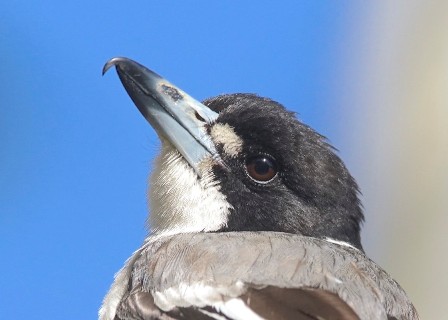
by mccgadmin
The presence of Fairy-wrens breeding on a property is always an indicator that there is good habitat as they are one of the first groups of birds to move away if conditions are poor. We have three groups of Fairy-wrens on our property and each group have been fascinating to watch over the years: Superb, Variegated and Red-backed.
We have three families of Superb Fairy-wrens that regularly nest on the property. One pair nests near our house and they are not very successful as they spend much of their time attacking the windows of the swimming pool room and our car side mirrors.
The next family, usually a breeding pair with two or more assistants, breeds behind a shade house along the fence line in a Callistemon bush about 2 metres off the ground and they raise two lots of young successfully each year. They feed on insects from a wide range of shrubs and even quite high up in trees.
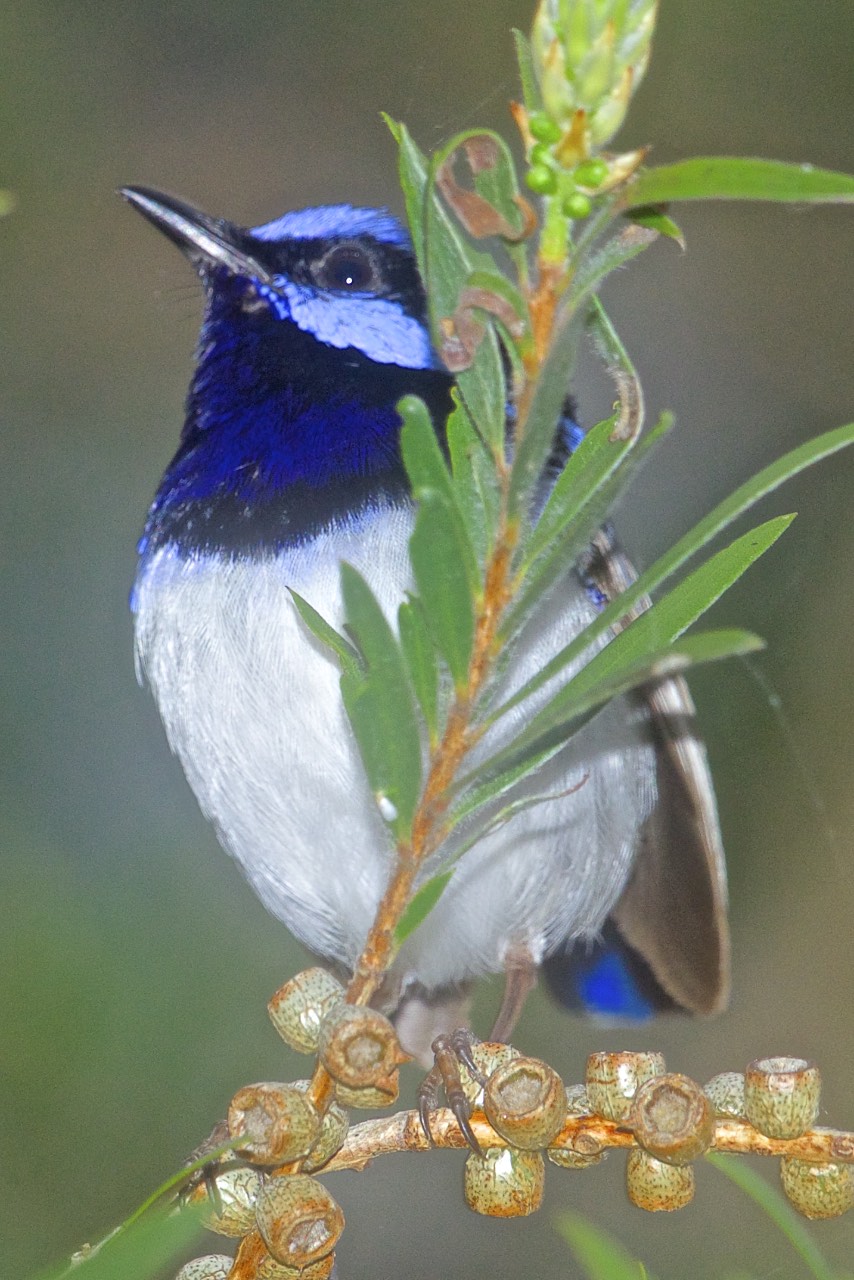
One of Ed’s Superb Fairy-wrens
The third pair nests on shrubs on the road verge and, while they are in excellent condition, they seldom raise a family as they are put off with the traffic and dogs and cats from the neighbours’ properties.
The Variegated Fairy-wrens live in the drier parts of the property and they generally forage on insects. They breed in the Lantana on the SEQEB easement or on the drier Western facing slopes over the back of our property.

Variegated Fairy-wren – courtesy of Ed Frazer
They are more secretive and range over quite large overlapping territories so I am not sure how many breeding groups there are. Usually they have only one coloured male with a number of juveniles including some young males with blue tails. Often there are 5 or 6 in the troupe. They usually breed successfully, raising 4 young twice a year.
The Red-backed Fairy-wrens are the most interesting of the three. They have smaller territories and feed much more on the insects in the grass than the other two. Usually there is only one male to about 4 females and juveniles. Sometimes there are two coloured males and often they associate with the Variegated Fairy-wrens.
I had an interesting experience where 4 fully coloured males were showing off to a group of females. Two of the males had a petal each of what we call “Wild Salvia” in their beaks. The petals are bright red and I assume they were trying to enhance their similarly red coloured backs. While this is not a common practice I have seen it before.
One day when the Wild Salvia was not in flower I saw a Red-back carrying an orange Lantana petal in its beak. Maybe it was colour blind, but birds perceive colour differently to us.
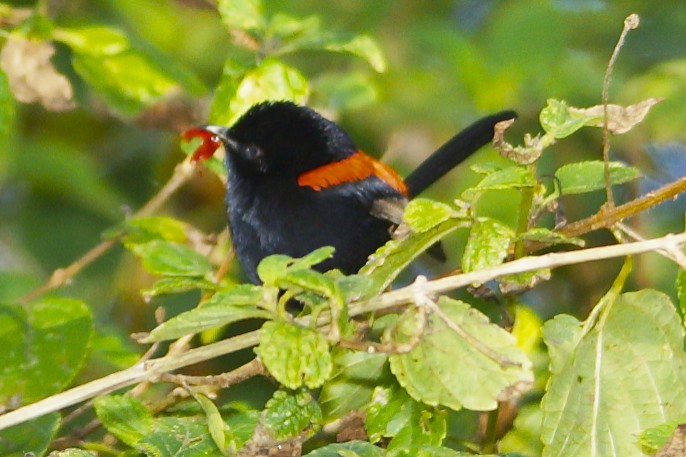
Red-backed Fairy-wren on Ed’s property
by mccgadmin
If a picture is worth a thousand words here is the equivalent of 10,000!
I’m not knowledgeable about the names of identification of the different species of Antechinus so these photos may be of the Yellow-footed, Brown or the newly discovered Buff-footed Antechinus. Hopefully one of our readers may be able to identify which one from tjhese photos.
The first four are of an Antechinus that was holed up during the day in a crevice between two tree trunks near the top of our hill. I was photographing a White-throated Treecreeper when the bird got a huge fright and out came this little fellow.
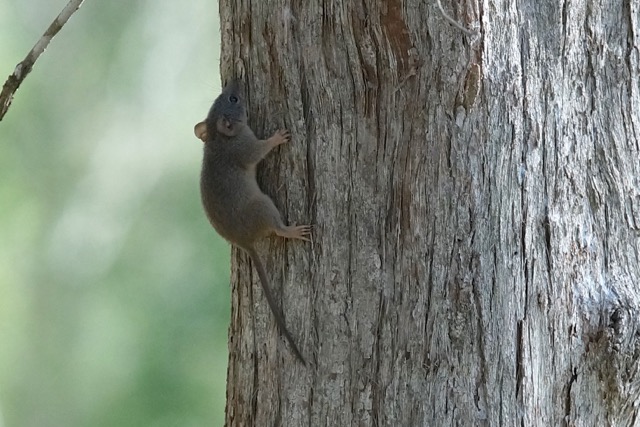


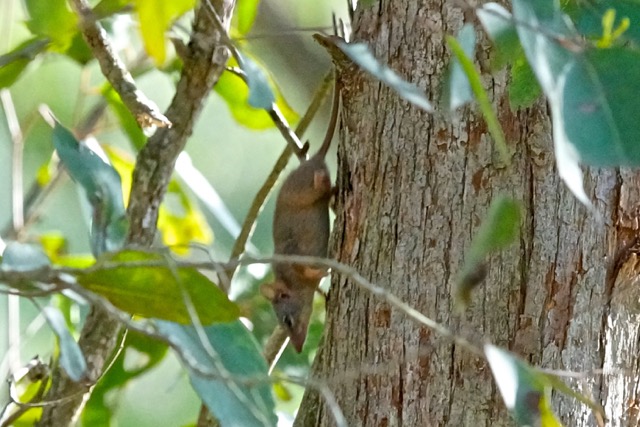
The next five photos are of an Antechinus that was helping itself to mealworms I was putting out to encourage the Painted Button-quail to come into camera range. They were taken over several days and it gradually it became less timid. It was in a much wetter area in a gully at the back of our property in Adavale Street.
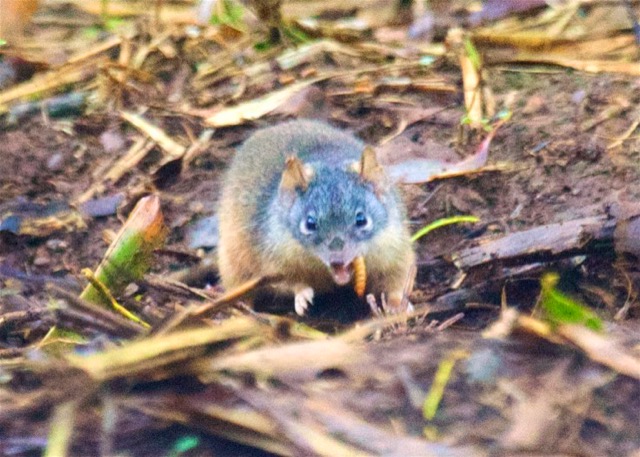
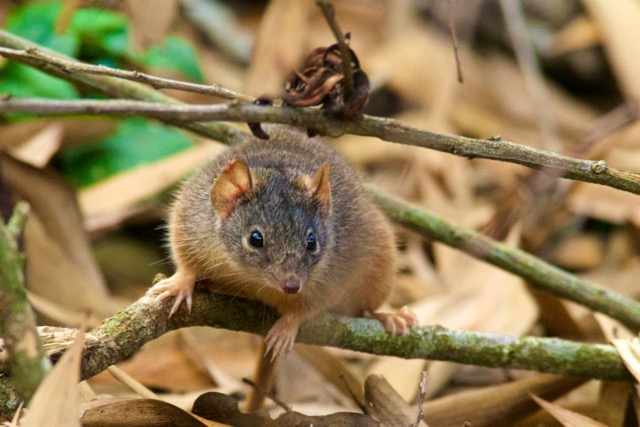
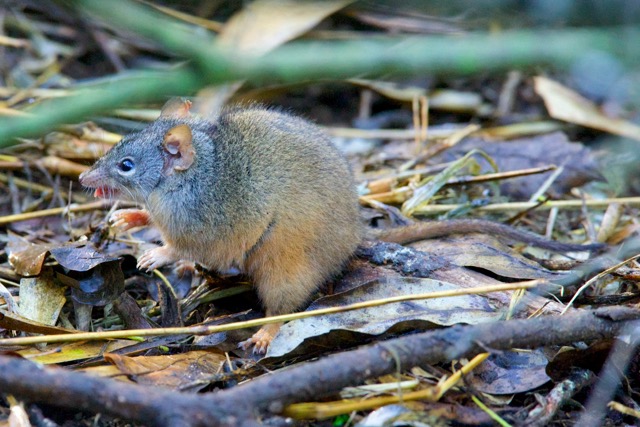
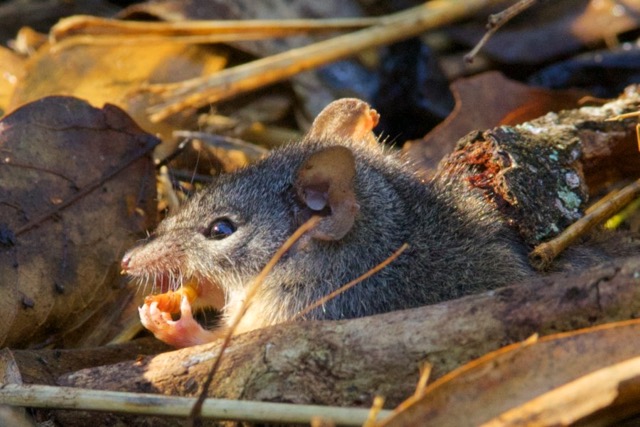
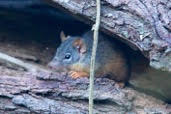
The following photo of the cat taken with an infra-red triggered camera is just one of several I have taken at night. The cat was playing with the animal before it killed it. It is not clear if it was an Antechinus, a Melomys or a mouse, but there is no doubt that Antechinus and other small native animals are being slaughtered by domestic cats that are allowed to hunt our native wildlife at night.
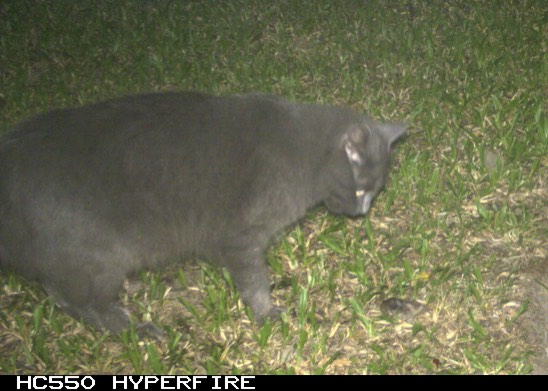
by mccgadmin
A TRULY EXCITING ANNOUNCEMENT for bird lovers who live within the Moggill Creek Catchment !!!
We are pleased to release an illustrated Online Field Guide to the diverse and prolific birdlife that resides right here in our catchment.
This initiative is due to the enthusiasm of Jim Butler, author of Feather Fascination, and Ed Frazer, renowned for his vibrant photos of birds on his Brookfield property. Together, Jim and Ed have created an alphabetic list that is custom-made for our catchment, with photos, scientific and common names, and information that is directly relevant to our district. The MCCG is grateful for their generosity and collaboration.
Our hope is that you will use the list both as an educational resource and a visual aid to identify birds you encounter when you’re out in the field … and simply for pure enjoyment!
Please click here to open the list.

Rufous Fantail – photo courtesy of Ed Frazer
Note: Feedback regarding the list is welcome via email to Jim Butler at: [email protected]
by mccgadmin
